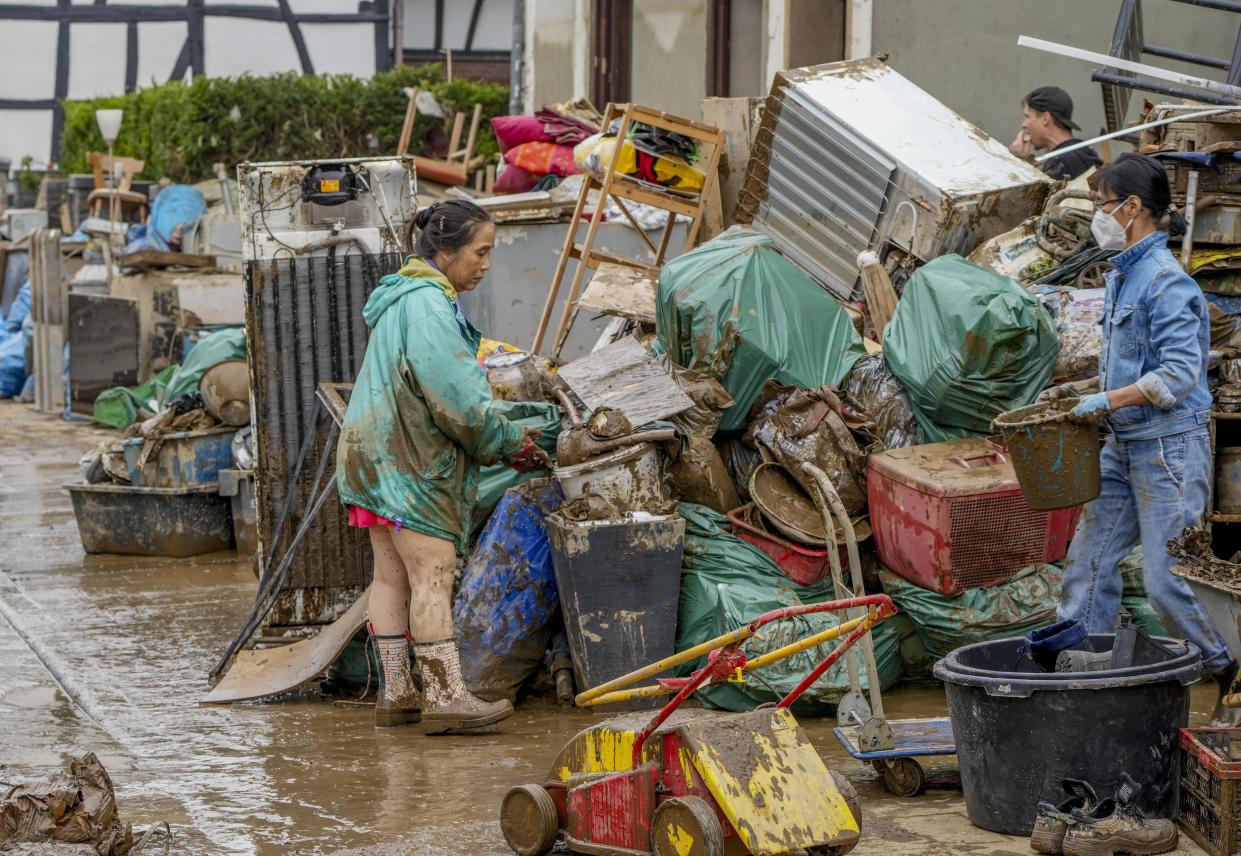'It looks like a war here': Rescuers race to find survivors from deadly floods in Europe
AHRWEILER, Germany — The gravestones were toppled over, almost completely submerged in mud. Nearby, a destroyed SUV looked like it had dropped from the sky.
But the damage in the walled, medieval town of Ahrweiler, Germany, on Saturday was not unique. Across huge swaths of western Germany and several other European countries, rescue workers toiled to clear up the disastrous flooding devastation, revealed by receding water, and prevent further damage.
"It looks like war here, like a bomb went off," Niklas Walbroel, 28, told NBC News, as he helped to dig out his friend's home appliance store.
"You never, never, never expect to see this in Europe," the port worker added as he emptied putrid water from washing machines and piled destroyed flat-screen TVs in the mud. "Yesterday we just cried, but we’re our doing best to save what we can."
Along the road, his neighbors were also pitching in with the cleanup efforts. Cafés and restaurants that last week were full of tourists are now part of the disaster zone.
Across Europe, the death toll rose above 150 on Saturday, and police said more than 90 people had died in western Ahrweiler county, where the town is situated. Experts have said a failure to heed warnings about the intense rains was likely responsible for the high number of deaths.
Rescue crews have been racing to find survivors as hundreds more remain missing after swollen rivers poured onto the streets, devastating communities, crushing cars and reducing some houses to rubble. Cellphone networks have collapsed in some regions, leaving people unable to contact their loved ones, while many areas remain without electricity.
The German Defense Ministry has also deployed 850 soldiers across 18 districts in the North Rhine-Westphalia and Rhineland-Palatinate states to help with rescue efforts.
Download the NBC News app for breaking news and politics
In the town of Ophoven in North Rhine-Westphalia, evacuation efforts continued after a dam, which lies along the Rur River, broke Friday afternoon, a spokesperson from the district government of Cologne said.
Around 700 people from neighboring Ohe were successfully evacuated Friday, they said, adding that there was growing concern over the Steinbach dam, which is carrying too much water and is at risk of collapsing.
Authorities are releasing 7 cubic meters of water per second and have released 260,000 cubic meters so far, the spokesperson said. A total of 700,000 cubic meters will need to be released to stabilize the dam.
German President Frank-Walter Steinmeier is due to visit the hard-hit town of Erftstadt in North Rhine-Westphalia on Saturday, together with regional head Armin Laschet.

In neighboring Belgium, at least 27 deaths were reported Saturday, according to state broadcaster RTBF, which reported that European Commission President Ursula von der Leyen and Belgian Prime Minister Alexander De Croo were visiting flood-damaged towns Saturday.
Tens of thousands of people in the Netherlands have also been evacuated over the past two days, and emergency services remained on high alert through Saturday.
Caretaker Prime Minister Mark Rutte, who visited the region Friday, said it faced "three disasters."
"First, there was corona, now these floods and soon people will have to work on cleanup and recovery," he said. "It is disaster, after disaster, after disaster. But we will not abandon Limburg," a province hit by the floods. His government has declared the flooding a state of emergency, opening up national funds for those affected.
Raf Sanchez reported from Ahrweiler and Rhea Mogul from London.
